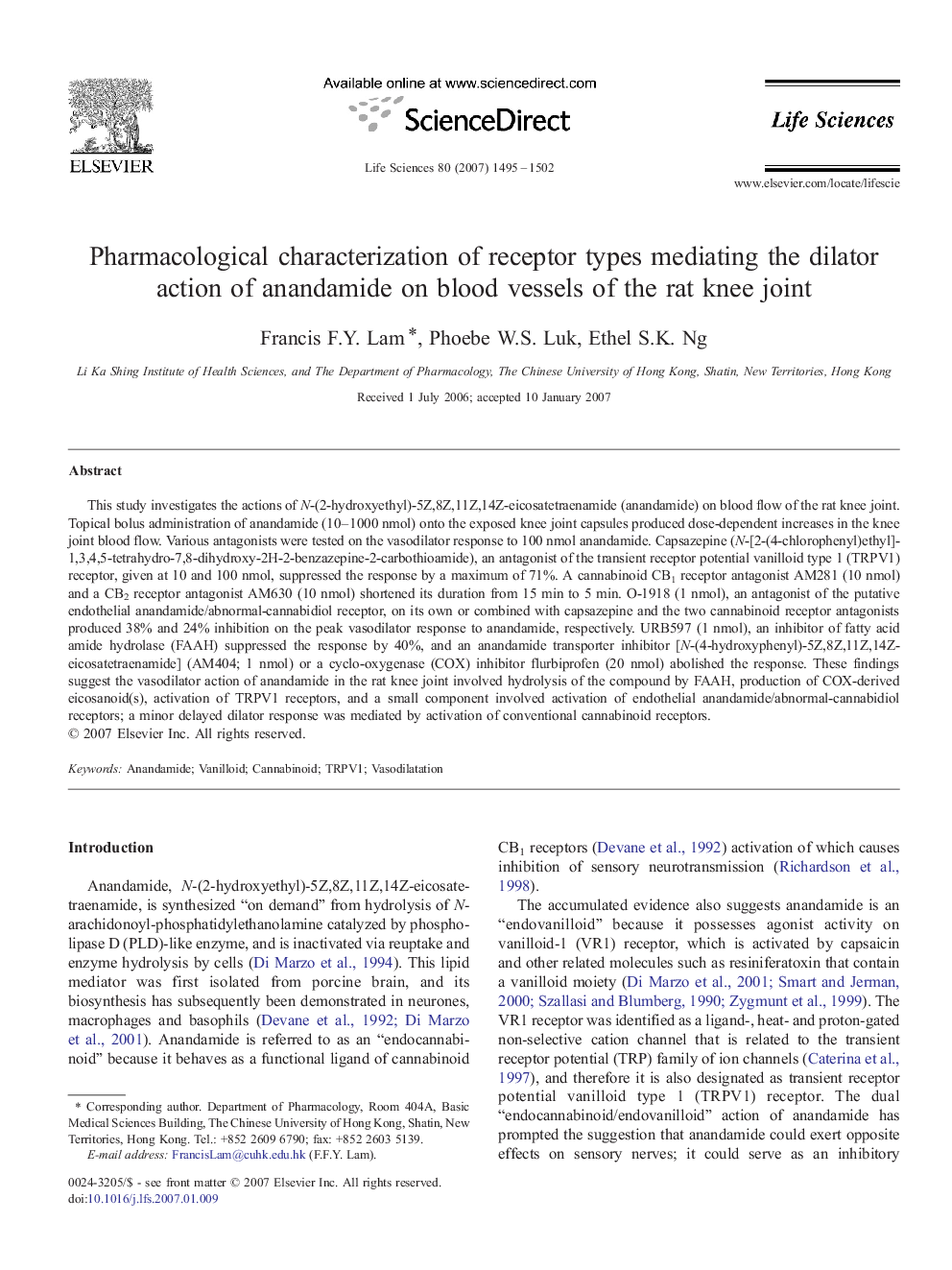| Article ID | Journal | Published Year | Pages | File Type |
|---|---|---|---|---|
| 2553855 | Life Sciences | 2007 | 8 Pages |
This study investigates the actions of N-(2-hydroxyethyl)-5Z,8Z,11Z,14Z-eicosatetraenamide (anandamide) on blood flow of the rat knee joint. Topical bolus administration of anandamide (10–1000 nmol) onto the exposed knee joint capsules produced dose-dependent increases in the knee joint blood flow. Various antagonists were tested on the vasodilator response to 100 nmol anandamide. Capsazepine (N-[2-(4-chlorophenyl)ethyl]-1,3,4,5-tetrahydro-7,8-dihydroxy-2H-2-benzazepine-2-carbothioamide), an antagonist of the transient receptor potential vanilloid type 1 (TRPV1) receptor, given at 10 and 100 nmol, suppressed the response by a maximum of 71%. A cannabinoid CB1 receptor antagonist AM281 (10 nmol) and a CB2 receptor antagonist AM630 (10 nmol) shortened its duration from 15 min to 5 min. O-1918 (1 nmol), an antagonist of the putative endothelial anandamide/abnormal-cannabidiol receptor, on its own or combined with capsazepine and the two cannabinoid receptor antagonists produced 38% and 24% inhibition on the peak vasodilator response to anandamide, respectively. URB597 (1 nmol), an inhibitor of fatty acid amide hydrolase (FAAH) suppressed the response by 40%, and an anandamide transporter inhibitor [N-(4-hydroxyphenyl)-5Z,8Z,11Z,14Z-eicosatetraenamide] (AM404; 1 nmol) or a cyclo-oxygenase (COX) inhibitor flurbiprofen (20 nmol) abolished the response. These findings suggest the vasodilator action of anandamide in the rat knee joint involved hydrolysis of the compound by FAAH, production of COX-derived eicosanoid(s), activation of TRPV1 receptors, and a small component involved activation of endothelial anandamide/abnormal-cannabidiol receptors; a minor delayed dilator response was mediated by activation of conventional cannabinoid receptors.
